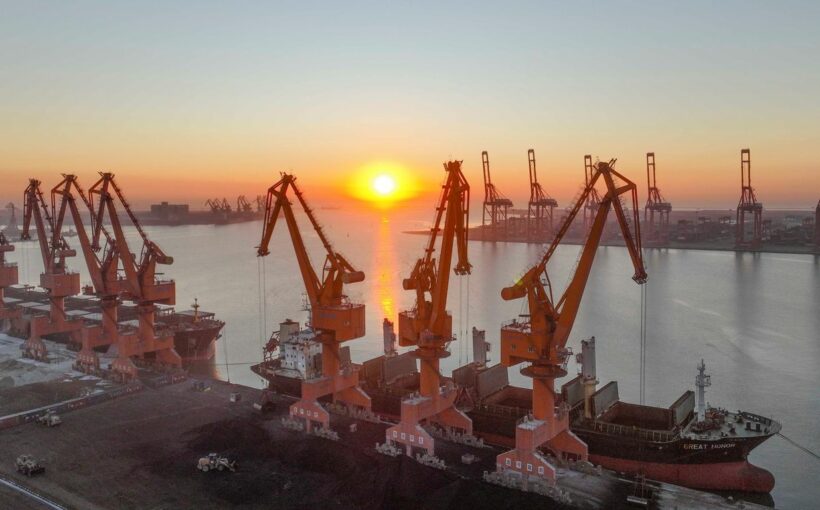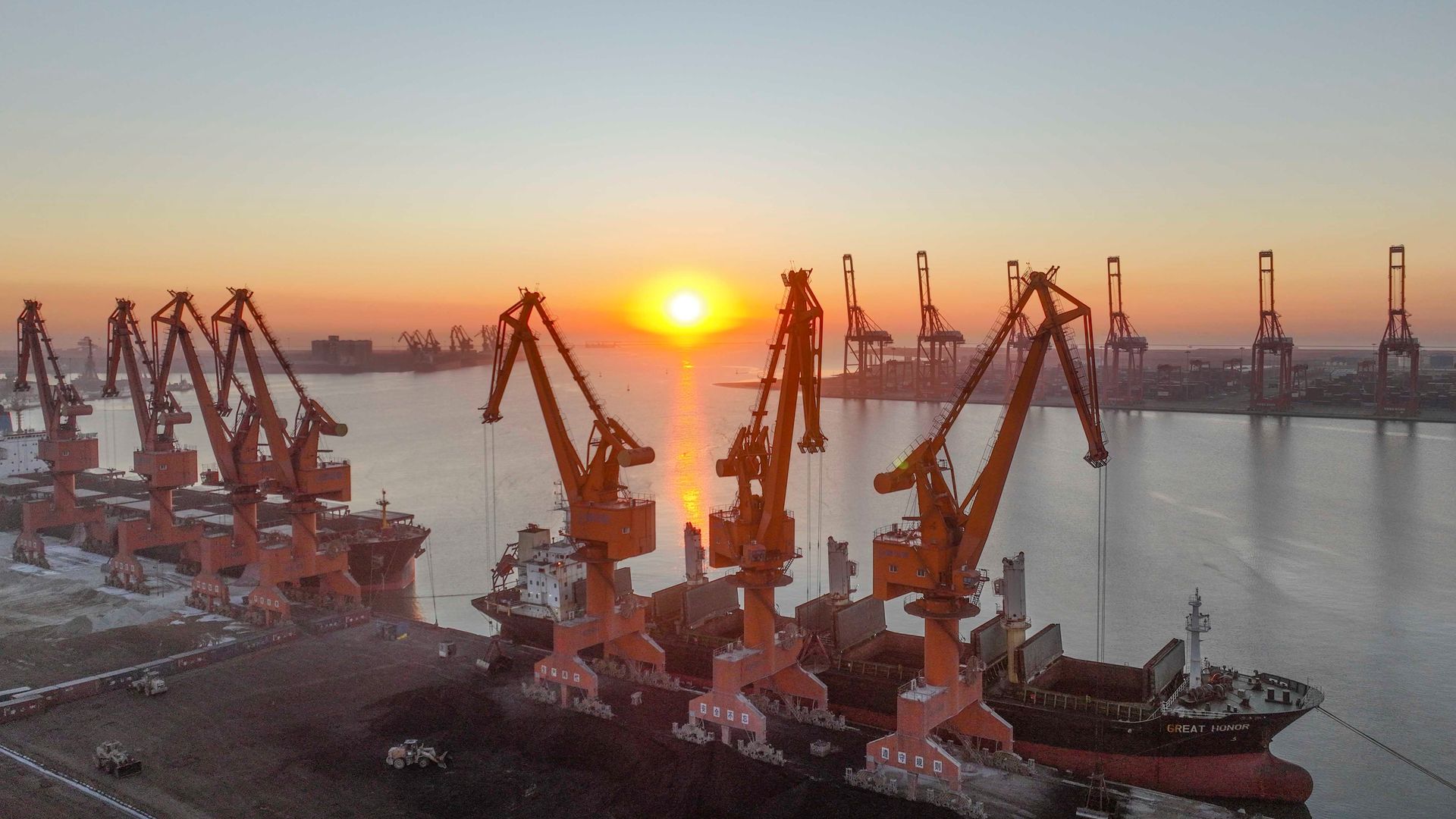A long, slow sunset? Photo: Liu Mancang/Xinhua via Getty Images
China's economy posted its slowest annual growth since 1976, another indication the post-COVID world economy could be vastly different from the decades that preceded the pandemic.
Why it matters: Since it burst onto the world economic stage in the early 1990s,China's economy has been a central driver of business decisions in virtually every part of the world economy.
- This includes Australian and Brazilian miners, oil producers in the Gulf, British and American bankers, Argentinian farmers, and German automakers.
- The combination of the world's largest population, with some of the fastest rates of economic growth — in the 1990s and early 2000s China regularly grew more than 10% per year — made the People's Republic the single-most important contributor to global economic growth.
Driving the news: New numbers from China's National Bureau of Statistics showed its economy expanded by just 3% for the full year, down from 8.1% in 2021.
Between the lines: Some on Wall Street seemed to think the Chinese government's official numbers — often looked at skeptically by independent analysts — could be a bit too rosy.
What they're saying: "It is very surprising in our view that the reported numbers for December were not worse, given the large Covid wave in the month," Goldman Sachs economic analysts wrote in a note to clients.
Context: Analysts tie the country's recent economic ills to its harsh "Zero COVID" lockdown policies, which wreaked havoc last year.
- The situation doesn't seem to have improved much since those policies, which provoked startling public protests in the authoritarian state. Beijing has eased them in recent weeks, setting off a surge of infections and deaths.
Yes, but: China's economic problems go beyond the virus.
- Years of a speculative frenzy in housing have caught up with the country. Home prices are now deflating, and major homebuilders appear dangerously over-indebted.
- The government's sudden confrontation with its formerly high-flying tech sector spooked global investors, prompting foreign investors to pull capital from the country.
- The impact of the virus, as well as growing political tensions with major trading partners such as the U.S., are driving diversification away from Chinese supply chains.
What's next: Now, a long-predicted demographic downturn in the country has also arrived.
- Numbers released by China on Tuesday showed its population shrank for the first time since the 1960s, as deaths outpaced births.
- While birthrates have long been slowing in China — a typical phenomenon as countries become more affluent — it marks a major tipping point.
The bottom line: The combination of geopolitical tensions, domestic disarray and demographic decline mean it's all but impossible that China's economy regains its previous vigor.
Source: Read Full Article

